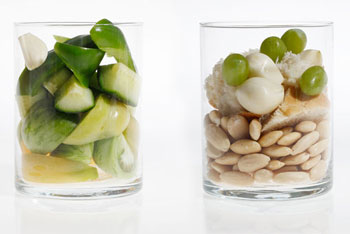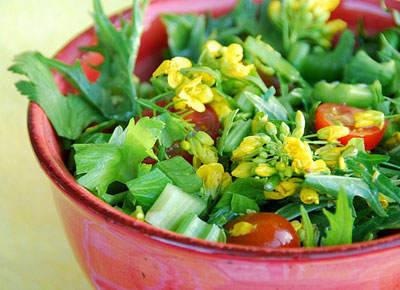 Gazpacho, how much do I love you? This cold, raw tomato soup hails from Andalusia, Spain and if I don’t get my butt to España soon I will be forever cranky. I could easily dedicate an entire blog about the country of Spain, it’s one of my favorite places on the planet that I would gladly pack up and move to tomorrow if I had my druthers.
Gazpacho, how much do I love you? This cold, raw tomato soup hails from Andalusia, Spain and if I don’t get my butt to España soon I will be forever cranky. I could easily dedicate an entire blog about the country of Spain, it’s one of my favorite places on the planet that I would gladly pack up and move to tomorrow if I had my druthers.
The only problem is that a) I am an American so there’s that pesky paperwork problem and b) I’d fall asleep at the dinner table each and every night. Oh who am I kidding? I would have been in bed for 2 hours by the time everyone assembles for dinner. Old man, me.
These two recipes for gazpacho come from Chef José Andrés. Whenever I think of him I get warm and tingly and I am thankful that he has chosen to live here in the US. I believe it makes this a better place, for sure.

 Every year with the arrival of spring comes the short-lived season of ramps. From about April to May ramps are available in farmers' markets in the Northeast. Here people go crazy over ramps. Sometimes I wonder why they're loved so much. Last year I cooked and pickled ramps for the first time and grew very fond of them. Ramps are unique in that they're harvested from the wild. If you know where to find them or know of a forager who can find them for you, then you're very lucky to get them for free. But the rest of us have to buy them at the market.
Every year with the arrival of spring comes the short-lived season of ramps. From about April to May ramps are available in farmers' markets in the Northeast. Here people go crazy over ramps. Sometimes I wonder why they're loved so much. Last year I cooked and pickled ramps for the first time and grew very fond of them. Ramps are unique in that they're harvested from the wild. If you know where to find them or know of a forager who can find them for you, then you're very lucky to get them for free. But the rest of us have to buy them at the market. To the uninitiated, the boysenberry may look like a big, blowzy, underripe blackberry, but it is in fact a noble fruit, as distinct from a common blackberry as a thoroughbred is from a mule.
To the uninitiated, the boysenberry may look like a big, blowzy, underripe blackberry, but it is in fact a noble fruit, as distinct from a common blackberry as a thoroughbred is from a mule. Green, white, brown, and blue are my favo combos – this combo is truly classic, season-less and timeless! If you are setting a winter tableaux, a summer soiree or an
Green, white, brown, and blue are my favo combos – this combo is truly classic, season-less and timeless! If you are setting a winter tableaux, a summer soiree or an  Growing up "salad" meant a plate with iceberg lettuce, cucumber, carrot, and tomato slices, and bottled Catalina dressing.
Growing up "salad" meant a plate with iceberg lettuce, cucumber, carrot, and tomato slices, and bottled Catalina dressing.
